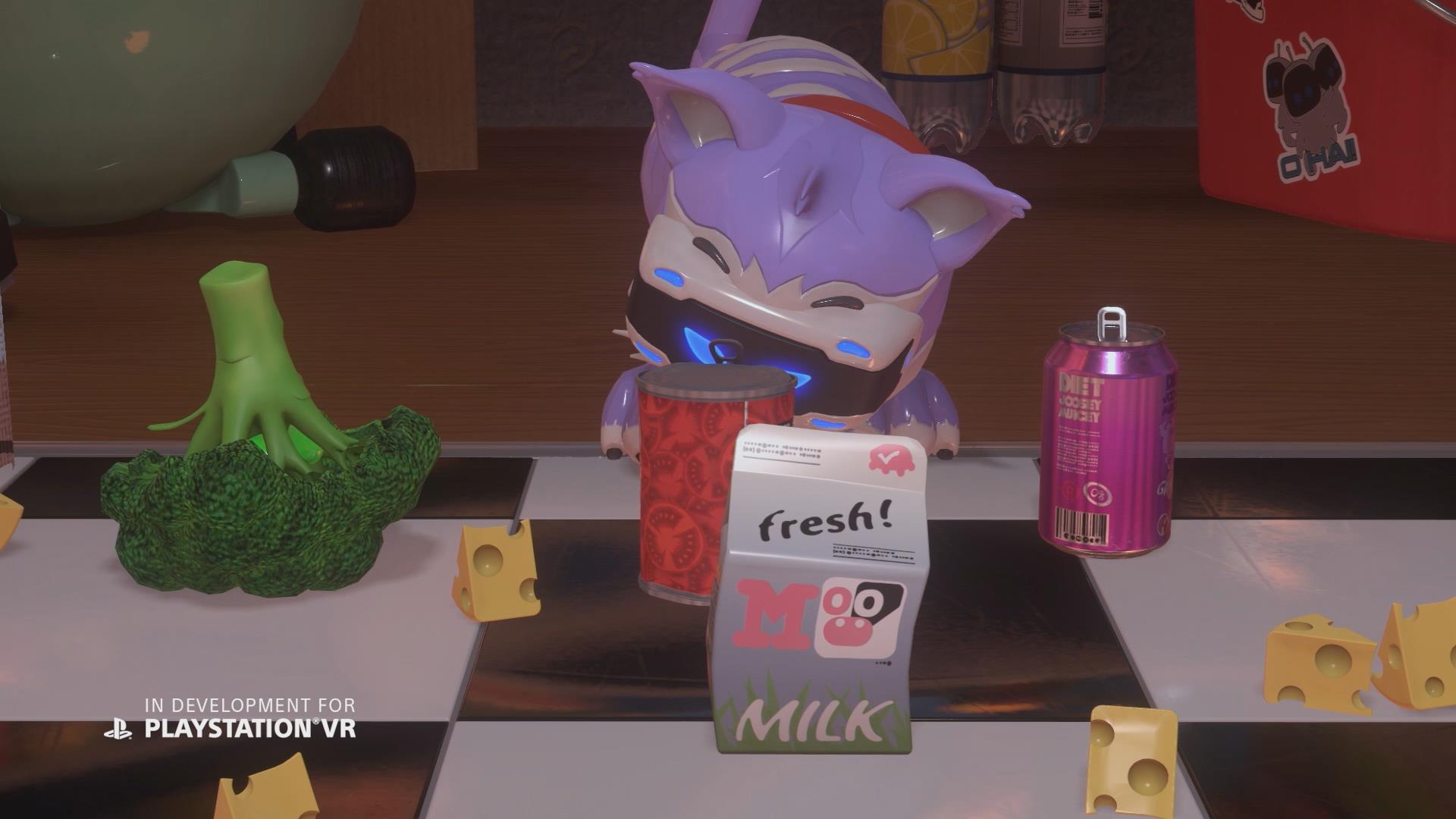
Performance is part of the fun in Japan Studio’s upcoming party game
Hello again. I’m Nicolas Doucet, creative director and producer of The Playroom VR. Today, we’ll talk a bit about something unexpected that emerged while our team experimented in virtual reality and that was carried into the final game: the aspect of performance.
As you know, PS VR wasn’t designed only for single player experiences; there are games that make use of the TV screen as a second display as well. Utilising the TV screen means that TV players are able to see the VR player inside the game from a totally different viewpoint. In an earlier post, we looked at how we approached the design of these VR characters to have a certain presence on the television screen.
Today I would like to dig a little into an observation we made while playtesting. We noticed that some players, when they knew they were being watched on the TV, began acting differently in the game, often exaggerating their body language for the purpose of comedy.
And since the tracking of the headset is so accurate, even the most subtle of head movements are accurately transposed and this can create some really funny situations. For example, in Cat & Mouse, some VR players pretended to be a puzzled cat, sniffing objects franticly in the room.
In Monster Escape, you can add drama by coming nose-to-nose with the TV heroes with a menacing look or peek behind a building and come out screaming “peekaboo!” (which earns you a Trophy, by the way). It instantly adds a fun and theatrical dimension to the way these CG characters move. The player becomes an actor or a puppet master, of sorts.
We also noticed that people who enjoyed performing in such ways had a tendency to make a lot of noise! So we made sure we used the on-board microphone located under the front of the headset, so the voice of the VR player could be captured, distorted and played back on the television in a silly way. That added a fun aural dimension to the acting. We made sure we pitched the voice up so they sound really silly, too. Of course, we also made the mouth of our VR characters move roughly in sync with the voice of the players, for added comedy.
The interesting conclusion to this discovery is that, while VR would normally be seen as a very personal immersion, looking at someone goofing around inside a “virtual character costume” is also part of the immersion, one where the VR player and their VR costume become one of the benefits to their audience.
The Playroom VR could be considered as a VR party game, where the dimension of performance is no longer limited to what happens in the digital world, but also to what happens in the room. A different way of breaking the fourth wall in future games, perhaps?
So, when you try The Playroom VR, be sure to give your best performance!
Don’t hesitate to drop us your ideas for funny multiplayer VR situations in the comments below, we will read and discuss them all with the team. Thank you for reading!













Join the Conversation
Add a CommentBut don't be a jerk!
4 Comments
Loading More Comments